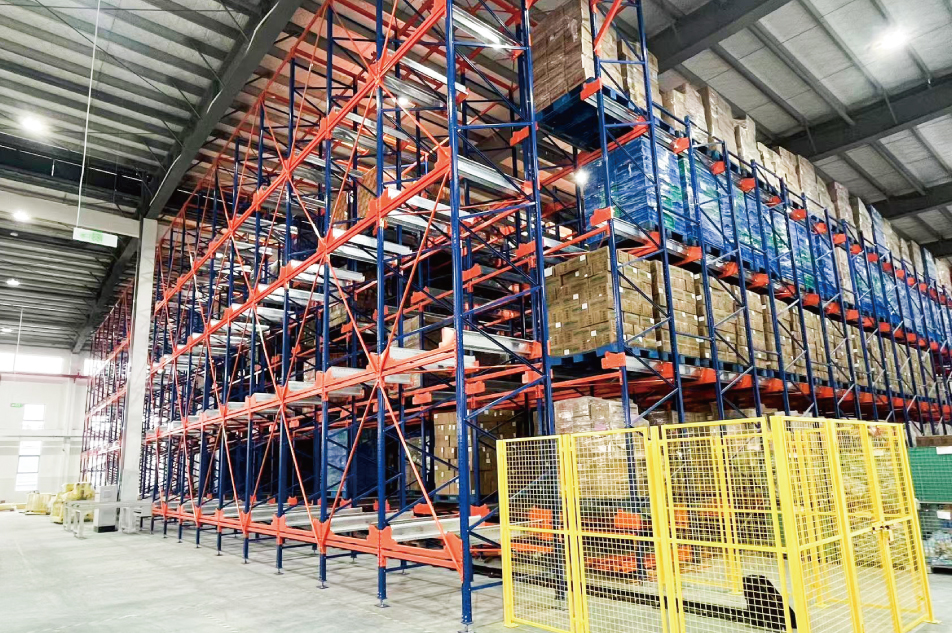7 Key Technologies Used for Warehouse Automation

Warehouse automation has become a non-negotiable strategy for businesses striving to meet growing consumer expectations and operational complexity. With tighter order cycles, labor shortages, and mounting SKUs, integrating intelligent technologies into your warehouse isn’t optional—it’s a decisive factor in achieving operational excellence. From unitload ASRS to autonomous mobile innovations, these tools enhance throughput, reduce labor dependency, and ensure precision across every function. This guide examines the seven most impactful warehouse technologies transforming modern facilities into fully automated powerhouses of productivity.
1. Automated Storage and Retrieval Systems (ASRS)
The core of advanced warehouse automation lies in ASRS Systems . These solutions are engineered to streamline the storage retrieval process, handling high volumes of SKUs with unmatched precision and speed. A well-implemented ASRS system reduces footprint, minimizes handling errors, and accelerates order cycles—all while ensuring consistent performance in fast-paced operations.
There are several types of ASRS , including:
- Unitload ASRS: Designed to manage heavy palletized loads, this system is ideal for storing bulk inventory efficiently.
- Miniload ASRS: Perfect for small parts or cases, it offers quick access to high-frequency SKUs.
- Shuttle systems: High-density storage and horizontal movement make shuttle systems a preferred option in space-constrained warehouses.
These systems work best when integrated with warehouse management systems, ensuring seamless orchestration of the retrieval, replenishment, and inventory processes. A fully automated ASRS minimizes manual intervention, lowers labor costs, and supports around-the-clock operation.
2. Pallet Shuttle Systems
For high-density storage and streamlined retrieval, Pallet Shuttle System provide a semi-automated storage solution that boosts both speed and safety. These systems employ a shuttle cart that runs along rails in storage channels to move pallets to and from positions. The operator controls the movement via remote interface, minimizing forklift use and reducing human error.
A pallet shuttle system ensures faster order fulfillment and improved inventory control.
3. Warehouse Management Systems (WMS)
A robust WMS system underpins every successful automated storage strategy. It unifies data streams across departments—enabling real-time tracking, predictive planning, and automation of order processing.
Inventory visibility, order fulfillment automation, and data-backed operations are the key benefits of WMS. Integrated with ASRS systems, it supports a fully automated warehouse workflow.
4. Automated Guided Vehicles (AGVs)
Automated Guided Vehicles or AGVs are essential in evolving toward autonomous mobile logistics. These driverless vehicles transport goods across zones without human oversight, operating 24/7 with high precision and safety.
AGVs increase operation efficiency and reduce risk, especially when integrated with ASRS systems and automated storage solutions.
5. Internet of Things (IoT) in Warehouse Monitoring
IoT enables real-time insights into asset conditions and inventory flows. It supports predictive maintenance, loss prevention, and remote diagnostics. Paired with WMS and cloud platforms, IoT systems form a data-driven warehouse control center.
6. Automated Picking Tools
Automated picking tools like voice-pick, pick-to-light, and robotic arms accelerate order fulfillment while reducing error rates. When linked with ASRS systems, these tools enhance throughput and employee productivity.
7. Automated Inventory Control Platforms
Automated inventory control platforms digitize stock management. They enable real-time updates, reduce manual errors, and improve operation scalability—especially when integrated with IoT and WMS for centralized oversight of storage retrieval.
The Bigger Picture: Optimizing Warehouse Operations
Combining these technologies leads to a synchronized, fully automated warehouse environment. Facilities should assess their current workflows, select scalable technologies, and invest in WMS integration to maximize ROI.
Final Thoughts
A modern warehouse is defined by its level of automation, not just size. Tools like ASRS systems, pallet shuttle solutions, and automated picking tools shape a smarter operation. Thought leaders like Ed Romaine emphasize this shift. Embracing automation is essential for future-ready logistics.
Do you need more information?
Our team of experts will be happy to help you with any questions you may have.
More information